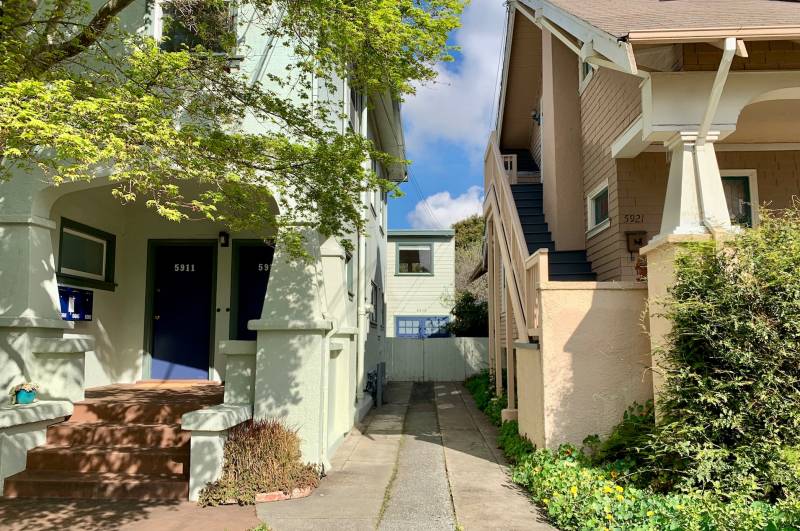Last week, Alameda County mailed flyers to about 4,000 addresses to inform them about how to complete the census if they live in an accessory dwelling unit, or ADU, that does not have a separate address with the U.S. Postal Service.
“It's very concerning to think about how the housing crisis is going to make this really challenging to reach individuals or possibly cause an undercount,” said Casey Farmer, executive director of Alameda County’s Complete Count Committee, which aims to boost participation in this year’s census.
Farmer is relying on hundreds of volunteers from nonprofits, local shelters and churches fanning out across Alameda County to ensure people from vulnerable communities are counted. That includes people the census considers hard to reach, like those living in nonstandard housing or families doubled up in a single unit. Renters, immigrants and communities of color have also been historically undercounted.
“We looked at the map of our hard-to-count communities. That's about 26% of Alameda County, the highest in the entire region,” Farmer said.
Census results determine political power and are used to direct roughly $1.5 trillion of federal funding to the states and local governments. So a major undercount in Alameda County could mean the loss of significant funding, Farmer explained.
“It's vital that we reach every single garage unit or back house and that those individuals know the importance of getting counted,” he said.
With skyrocketing housing costs in some areas of the country, a growing number of renters are living in unconventional housing units often left off the Census Bureau’s address list.
“And of course, California is one of the areas where that's the biggest problem,” said Edward Kissam, a trustee of the WKF Charitable Giving Fund and longtime researcher in census undercounts and immigrant communities.
In 2017, Kissam partnered with the Central Valley Immigrant Integration Collaborative to conduct a study identifying hidden housing missed by the Census Bureau in San Jose, San Francisco and Fresno. Canvassers identified 13,000 new low-visibility, unconventional housing units, that were added to the address list for the 2020 census.
Cindy Quezada, with the Central Valley Immigrant Integration Collaborative, spent several weeks walking the back alleys of Fresno neighborhoods looking for sheds, garages and trailers that served as makeshift homes.
“We were looking for structural designs, pipes or vents, as well as just signs of life,” she said. That could be the sound of a family making dinner or seeing a bottle of shampoo in a bathroom window.
Quezada and other canvassers covered 20 census tracts in Fresno in late 2017 through early 2018 and identified 606 unconventional housing units. Many of the people she spoke with were immigrants and people of color from low-income communities.
“The people who would most benefit from these federal programs are the ones who, ironically, are not getting counted,” Quezada said.
Those missed addresses could translate into tens of millions of federal dollars to fund important resources like food stamps, Section 8 vouchers and affordable housing.
Residents in hidden housing, like Erin Berman, are still considering their options for being counted. Berman may choose to fill out the form online and leave the paper survey for her neighbor to mail back.
But she knows she’s not alone. She points to the large house next door, which is split into half a dozen units.
“I venture to guess they don't really all know each other either,” she said.

